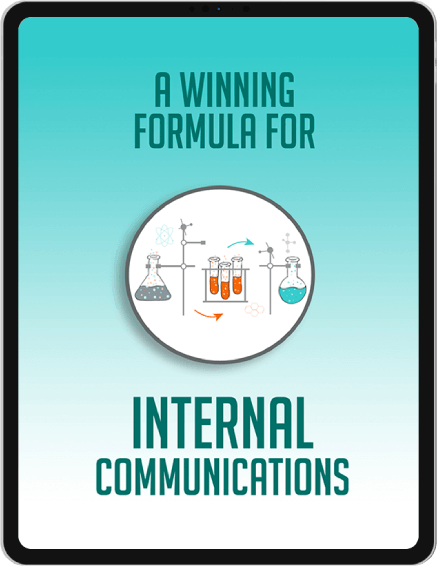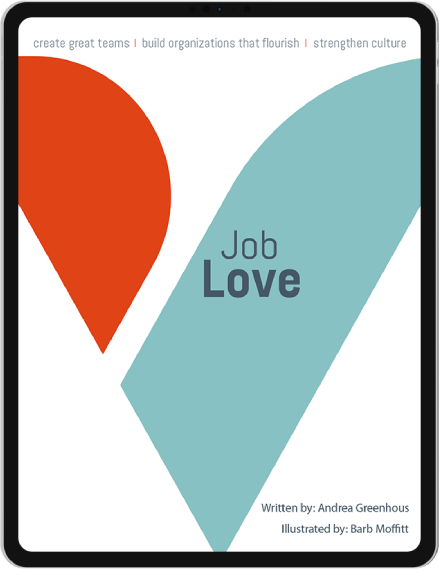
Everyone loves a good news story. Early in my career, I was ‘famous’ (using this word lightly!) on Canada’s Parliament Hill for creating a briefing note called The Good News. It was a weekly briefing note containing all of the positive economic data I could find from Statistics Canada along with stories of Canadian companies that were successful. Even the Prime Minister’s office would call to ask when the next Good News briefing note would be published, and it was often quoted in news interviews and in the House of Commons.
The problem with The Good News was that it was the height of a recession and while there were some bright spots in the Canadian economy, the briefing note probably didn’t paint a realistic picture. No wonder it was favoured by the government of the day.
Too Much of a Good Thing Becomes Corporate Propaganda
When conducting internal communications audits, employees often tell us that internal communication is not as honest and authentic as it could be. We hear communication is “corporate propaganda” — content that avoids difficult topics or stories about challenges the company has faced. That’s why we advise our clients to make sure that internal communication doesn’t focus exclusively on good news and perfectly happy stories.
Even though optimism is absolutely necessary to inspire and motivate people, I have come to the realization that you can have too much of a good thing. Organizations need to be honest with their employees and leaders need the courage to be humble enough to admit their imperfections. Sticking to ‘Happiness Always’ internal communications content can have these disastrous results when it comes to building a healthy workplace culture.
- You destroy trust. No one is fooled by a continuous feed of sunshine and roses. Business is challenging and if you limit communication to only good news then it is quickly viewed as inauthentic and employees will wonder what you are hiding.
- You lose an important source of learning. Employees can learn just as much from failure as they do from successes. Innovative companies fail fast and learn quickly.
- You crush psychological safety. Fear of failure can indicate low levels of psychological safety and by not celebrating failure, your workplace becomes a place where people are afraid to speak up and challenge the status quo.
- It’s just not human. No one is perfect – we are all flawed in some way and have strengths and weaknesses. Only talking about the good and the perfect dehumanizes your workplace.
“I have not failed, I’ve just found 10,000 ways that won’t work.”
Thomas Edison
Tips for Taking a More Authentic Approach to Internal Comms
I hope I’ve convinced you that your content and storytelling shouldn’t exclusively focus on good news. Keep reading to learn how to create internal communication that is balanced, authentic, and helps to build a learning and growth mindset in your organization.
Make Imperfection Okay
In a complex and unpredictable world, companies need to build cultures that embrace risk in order to support growth, innovation, and rapid change. These organizations understand that taking risks and not always getting it perfect the first time is a normal part of doing business. They understand that fear of failure is paralyzing and prevents people from experimenting and trying new things.
The simple act of telling stories about imperfection, let-downs, and flops, and highlighting the role that it had in making progress is a good way to start. Senior leaders need to be recruited to play a key role in the storytelling and content development so that it’s clear they endorse the ‘failure as an option’ mentality.
Reframe Failure
One of the ways to help people get beyond the ‘everything must be perfect’ is to make sure it’s clear that failure is a good thing. Botched projects, disappointing results, and challenging decisions all provide opportunities to learn. Many innovative organizations learn to fail early and fast. They embrace the rapid development of solutions knowing that expecting to get it perfect the first time is unrealistic. The approach they take is to develop a solution quickly and then course correct and fix things as they move forward, which is faster than waiting for everything to be flawless.
When communicating internally, make sure the content helps people tune in to the lessons that come from failure. By turning lessons into knowledge, you will reinforce a learning and growth mindset while helping others in the organization avoid the same mistakes.
Did you know that many venture capital companies won’t back an entrepreneur who hasn’t had at least one failure?
Cultivate a Healthy and Human Attitude Towards Work
To err is human yet how many people are afraid of making a stupid mistake and embarrassing themselves at work? Just as projects don’t turn out 100% perfect all of the time, people are not perfect either. Expecting everyone to be perfect is not only unrealistic, but it is also not a great way to build a more human employee experience. It also doesn’t encourage people to bring their whole and true selves to work.
The surprising thing is that embracing mistakes and weaknesses can have some positive effects. Researchers have shown that when imperfection is embraced, it can unleash innovation. In one experiment, managers were put into small teams and asked to generate different uses for a cardboard box. Before the brainstorming exercise, half of the group was asked to share an embarrassing moment and the other half was asked to share a proud moment.
“The results were clear: teams that shared embarrassing stories generated 26 percent more ideas than groups that shared stories of pride and they also generated a wider range of ideas, spanning 15 percent more categories.”
When communicating inside your organization, make sure your leader’s tool kit encourages vulnerability and reinforces values and behaviours that embrace flaws and shortcomings. Leaders who openly admit mistakes and who are humble and human will help everyone in their organization thrive.
Next time you are working on a content and storytelling plan for internal communications, try dropping your pom-poms. Instead, find stories that celebrate failure, mistakes, and imperfection. The impact on your culture will be remarkable!
“Perfectionism is not the same thing as striving to be your best. Perfectionism is the belief that if we live perfect, look perfect, and act perfect, we can minimize or avoid the pain of blame, judgment, and shame. It’s a shield. It’s a twenty-ton shield that we lug around thinking it will protect us when, in fact, it’s the thing that’s really preventing us from flight.”
― Brené Brown, The Gifts of Imperfection

A Winning Formula for Internal Communications
Read The Free eBook
Our eBook shares our unique formula for building business culture and driving success. Find out the 3 key factors in attracting, inspiring and retaining high-calibre talent. Get your free copy when you subscribe to our newsletter. Be the first to know about new blog posts and stay up to date with industry news.
Download the ebook





